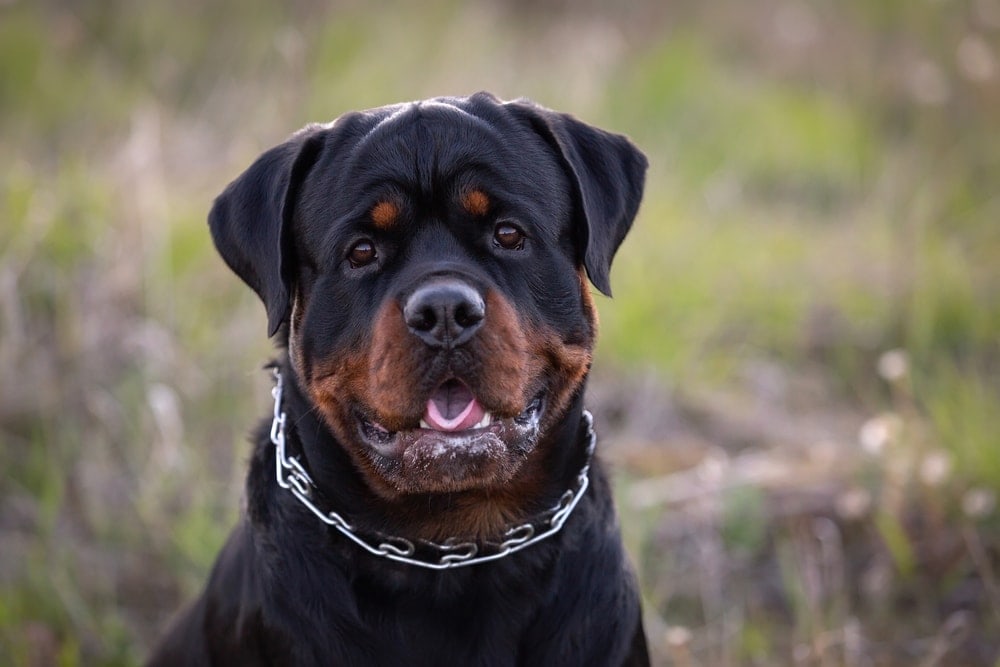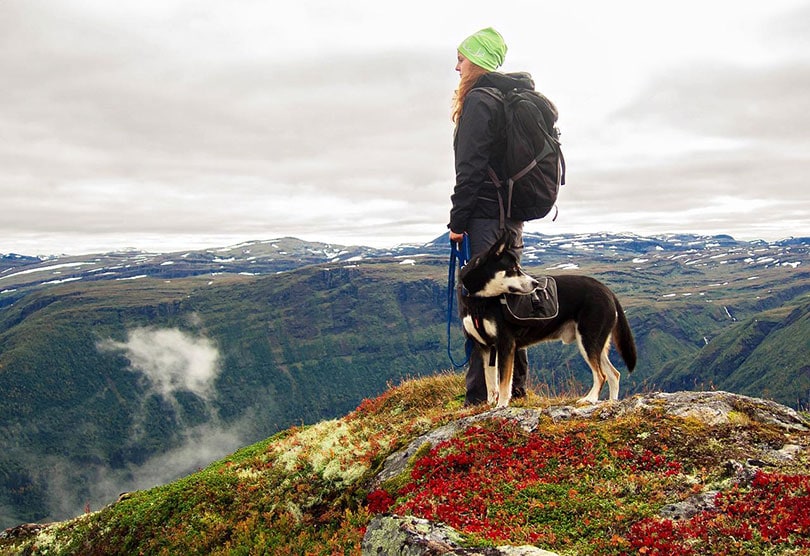Pool Safety for Dogs: 7 Ways to Keep Your Pets Safe
Updated on
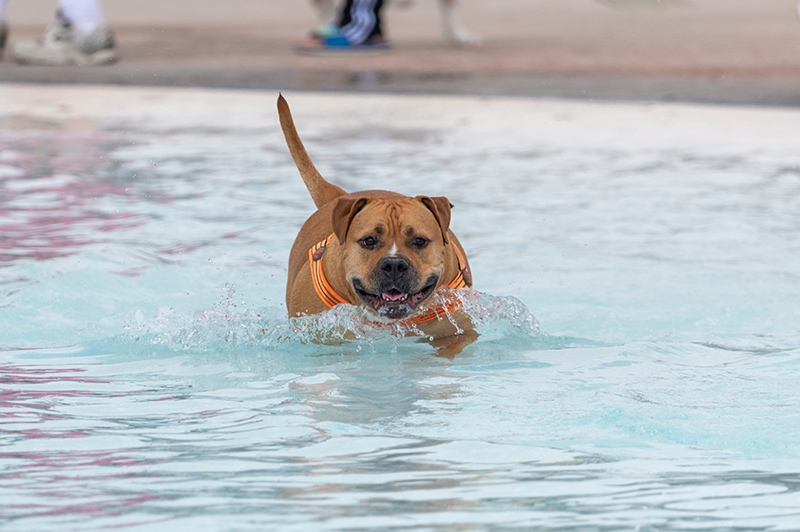
Dog owners may have mixed results with swimming, depending on the pup’s breed and individual preferences. For the right dogs, a nice dip in the pool, lake, or beach can be just the thing to cool off and have a ball with their favorite person.
If you’re feeling cautious about taking your dog into a pool for the first time, you’re in the right place. The good news is that we’ve written up a guide to the most invaluable dog pool safety tips you’ll ever need to know, so wade into the details below!
The 7 Ways to Keep Your Dog Safe in the Pool
1. Determine if Your Dog Can Swim or Not
Sadly, not all dogs are suited to swimming due to their face shape, body shape, and even their breed. For instance, a Pug makes a poor swimmer because of their flat face, which makes breathing while swimming difficult. That means they’ll tucker themselves out faster than other dogs, not to mention poor swimming dogs tend to have an aversion to the water in the first place. Bulldogs fare poorly in the pool too, as do short breeds like the Corgi.
Dogs particularly suited to swimming broadly include several Retrievers, like the Golden, Lab, and Chesapeake Retrievers. The aptly named Portuguese Water Dog not only has an affinity for the water, but webbed feet to help them swim around. Generally speaking, larger dogs do better in pools, but that doesn’t mean your small breed can’t enjoy a shallower doggy pool.
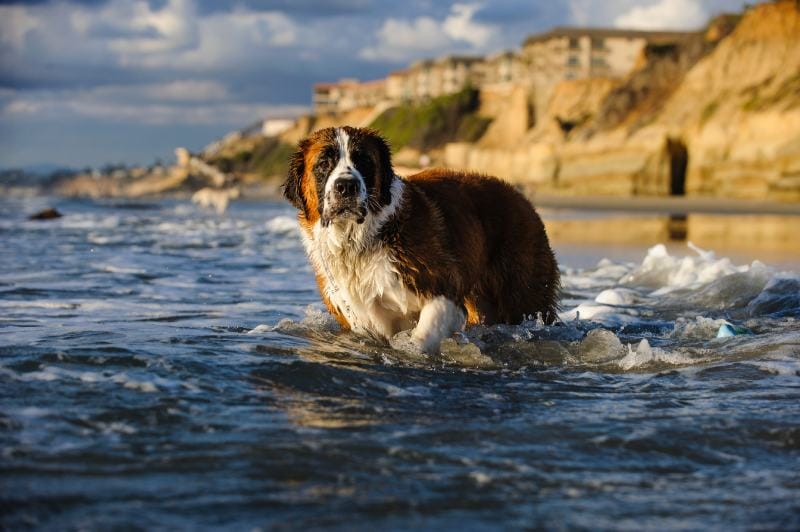
2. Take a Test Swim
If you’re pretty sure that your dog is capable of swimming and they’ve shown an interest in the water before, it’s time to give them a test run. Be on high alert for signs of fear or anxiety during your first test swim, and consider using a shallow kiddie pool at first.
For dogs skeptical about any amount of water, this will be a more palatable way to get into watersports. Allow your dog to explore at their own pace, and make sure they know you’re there in case anything happens.
3. Use Sunscreen for Sensitive Skin
While shaggier dogs may not need it, some dogs have sensitive skin that burns easily in direct sunlight. If you plan on taking your dog outside in the pool for a few hours, we highly recommend using a dog-safe sunscreen.
Generally speaking, white and light-colored dogs are more vulnerable to sunburn. Even dogs with darker bodies that have white around the face should wear sunscreen—a very vulnerable area many people forget about.
4. Life Jackets Are Life Savers
You’ll need a properly sized life jacket to get your dog swimming safely. They’re not mandatory and many dogs swim without them, but we strongly recommend you use a buoyant life jacket when you’re getting your dog used to the pool. Breeds with shorter legs, and even some big dogs, will need a life jacket every time they swim to stay safely above the water, but some long-legged breeds like the Lab and Newfoundland do great without floaties at all.
If a dog starts to panic in the water, a life jacket will help keep them afloat while you can help and reassure them. Without one, they could start to sink or, even worse, breathe in water. Life vests can be tricky to size, but they’re well worth the money and trouble to keep your pooch perfectly safe.
5. Avoid Water Consumption
Whether on purpose or accident, it’s imperative that you prevent your dog from swallowing any of the pool’s water. Chlorine and other pool treatment chemicals aren’t safe to ingest for humans or dogs, but excited dogs may not realize. That’s why it’s important that you have plenty of fresh water for your dog on hand because the sun will dehydrate them like no tomorrow.
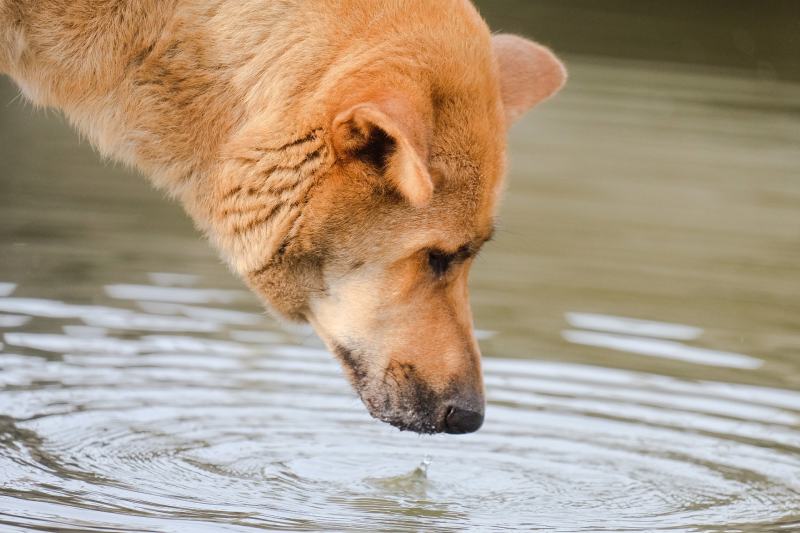
6. Take Breaks From Time to Time
Even if your dog shows no signs of slowing down in the pool, they need to take breaks periodically. All that sun and exercise can do a number on your pup, so have cool water and their favorite treats on hand to keep morale and their energy levels up. Strategic breaks will reduce the chances of heatstroke too, which you can spot if your dog is panting a lot and drinking a lot of water. Thankfully, that should be rare if the water’s cool enough.
7. Rinse Your Dog Off After Swimming
It’s a rookie mistake to assume you should just let your dog drip dry, but don’t! Pools, lakes, ponds, and beach water can all harbor nasty bacteria that can cling to your dog’s fur long after they go inside for a nice nap.
Immediately after swimming, hose your pup down with the water hose or in the shower to get any potential nasties off them. Post-swimming baths also help get rid of any dirt, algae, grass, or other debris that they may have picked up.
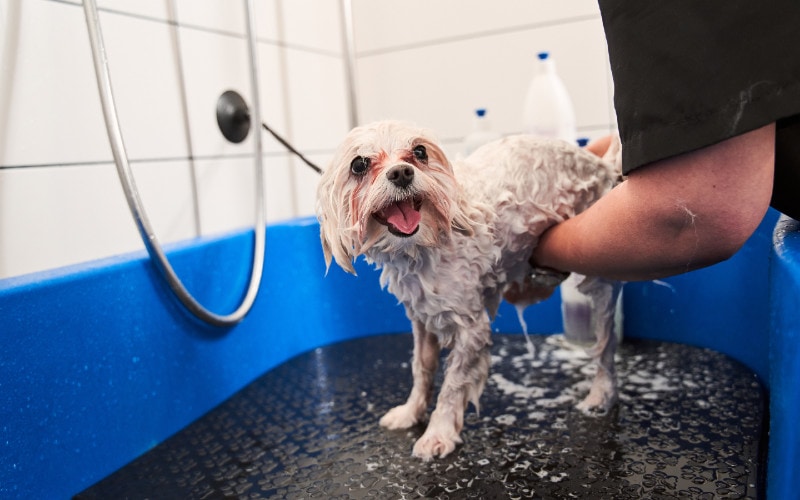
Final Thoughts
If your dog is showing interest in swimming, whether it’s a kiddie pool or a full-sized swimming pool, you’re in for a fun time! It can be challenging, but with patience, sunscreen, and a life jacket, you can get started today.
Featured Image Credit: GoDog Photo, Shutterstock

